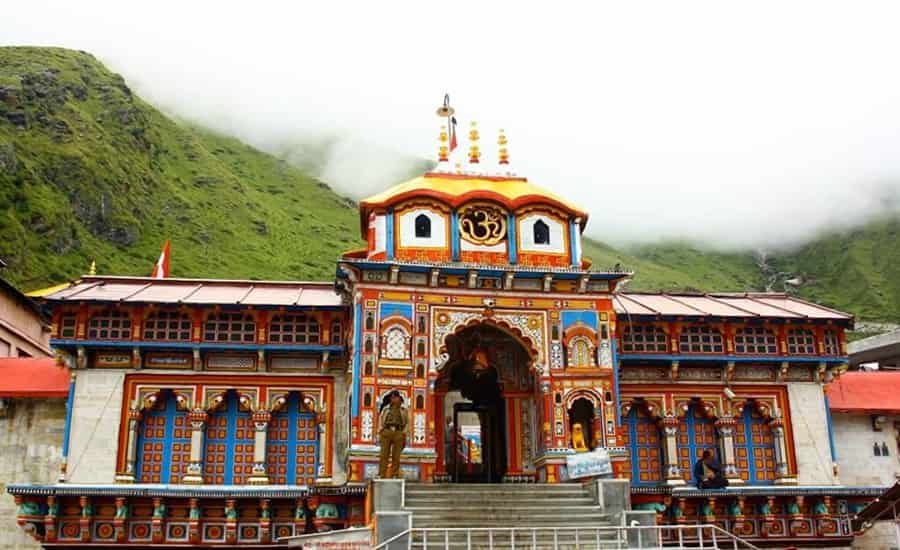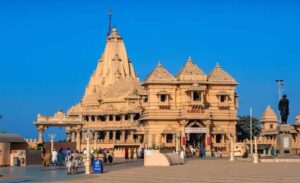History of Badrinath
Nestled in the lap of the majestic Himalayas, Badrinath is a sacred pilgrimage site that holds a rich tapestry of legends, mythology, and stories. This divine abode, dedicated to Lord Vishnu, attracts devotees and spiritual seekers from across the globe. As we embark on a journey through the annals of time, let us unravel the enchanting history of Badrinath and delve into the captivating tales that have woven this sacred destination into the fabric of Hindu spirituality.

Legend of Badrinath
The origins of Badrinath can be traced back to the ancient scriptures, where it is mentioned as one of the Char Dham, the four sacred abodes of Hindu pilgrimage. According to Hindu mythology, Badrinath is believed to be the earthly abode of Lord Vishnu in his dual form as Nar-Narayan. The legend narrates that Lord Vishnu, in his quest for meditation and penance, chose the serene and pristine location of Badrinath to perform severe austerities.
As the divine tale unfolds, Lord Vishnu assumed the form of Nar-Narayan, standing in meditation for thousands of years. Pleased with his devotion, Lord Shiva and Goddess Parvati, along with other celestial beings, decided to test Nar-Narayan’s steadfastness. Various challenges and temptations were thrown his way, yet the divine being remained undeterred in his pursuit of spiritual enlightenment.
Pleased with his unwavering determination, Lord Vishnu’s meditation finally culminated in the divine revelation of Badrinath. The temple at Badrinath, therefore, stands as a testament to the triumph of devotion over adversities and symbolizes the ultimate union of the mortal with the divine.
The Story of Adi Shankaracharya
The history of Badrinath is also closely intertwined with the renowned philosopher and theologian, Adi Shankaracharya. In the 8th century, Adi Shankaracharya visited Badrinath and was deeply moved by the spiritual energy that enveloped the region. Legend has it that he discovered a black stone image of Lord Badrinarayan in the Alaknanda River and enshrined it in a cave near the Tapt Kund (hot spring) where Lord Vishnu had once meditated.
Adi Shankaracharya, recognizing the significance of Badrinath as a spiritual center, established the Badrinath Math, one of the four cardinal institutions (mathas) that he founded across India. These mathas played a crucial role in preserving and propagating the teachings of Advaita Vedanta, a philosophical school that emphasizes the non-dual nature of reality.
The Legend of Tapta Kund
The Tapt Kund, a natural hot spring near the Badrinath temple, is steeped in its own mystique. According to the legend, the Tapt Kund is believed to be the spot where Lord Agni (the god of fire) manifested in response to the severe penance of Lord Vishnu. The scorching waters of the Tapt Kund are said to have healing properties, and devotees believe that a dip in its sacred waters cleanses the soul of impurities.
The Mythical Connection with Mahabharata
Badrinath finds mention in the ancient Indian epic, Mahabharata. It is believed that after the great Kurukshetra war, when Lord Krishna was departing for his heavenly abode, King Pandu’s sons and their widowed mother, Queen Kunti, decided to undertake a pilgrimage. It is said that they visited Badrinath and other sacred places in the Himalayas, seeking redemption for the sins committed during the war.
Conclusion
Badrinath, with its ethereal beauty and spiritual significance, continues to captivate the hearts of pilgrims and travelers alike. The legends, mythology, and stories associated with this sacred abode are not just a glimpse into the past but also serve as a source of inspiration for those on a quest for spiritual awakening. As we stand in awe of the snow-capped peaks that cradle Badrinath, we are reminded that beyond its physical grandeur lies a realm of divinity that transcends time and space.
- Suggested to Read: History of Kedarnath





